Integrations
Loggly
This document shows you how you can integrate Callgoose SQIBS with Loggly.
Incidents will be creating in Callgoose SQIBS when there is a incident created in Loggly as per the workflows configured by you in the Loggly
In Callgoose SQIBS
Create filter as per the Loggly workflows.
- For test purpose, create an API filter like this
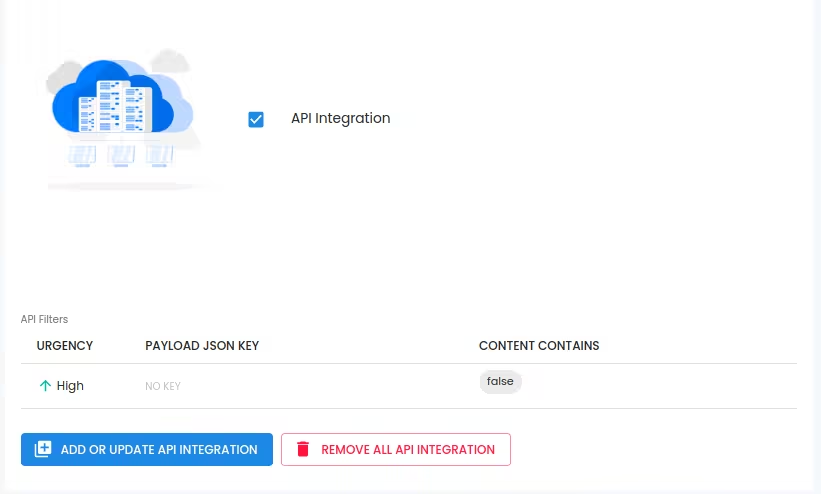
After test, create suitable API filter values depending on the payload sent by Loggly to create a meaningful incident.
In Loggly
1.Go to Alerts from the left navigation panel. Click on Log Alert Endpoints and then click on Create endpoint

2.In the Add Alerting Endpoint page select the End point as "HTTP Endpoint", method as "POST" and enter the URL. Enter the appropriate name and description for your endpoint and click on Save.
Webhook url : Enter your API Endpoint
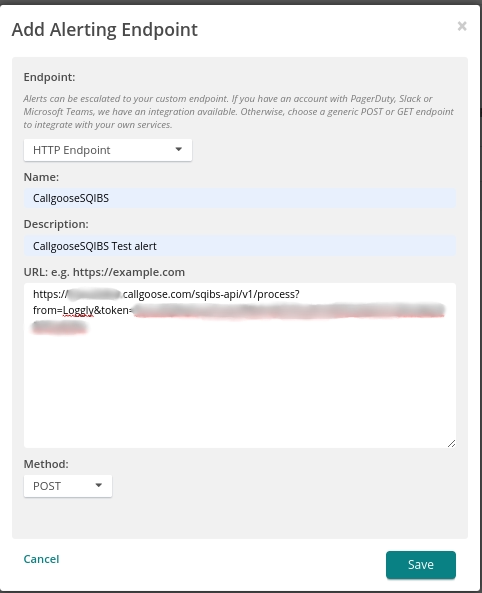
You can now use this alert endpoint in whatever alert configuration you like.
3.Select List menu and click on Add New . In that page fill the appropriate fields. Also in this tick Send to an endpoint and select the end point that we configure then click on save.
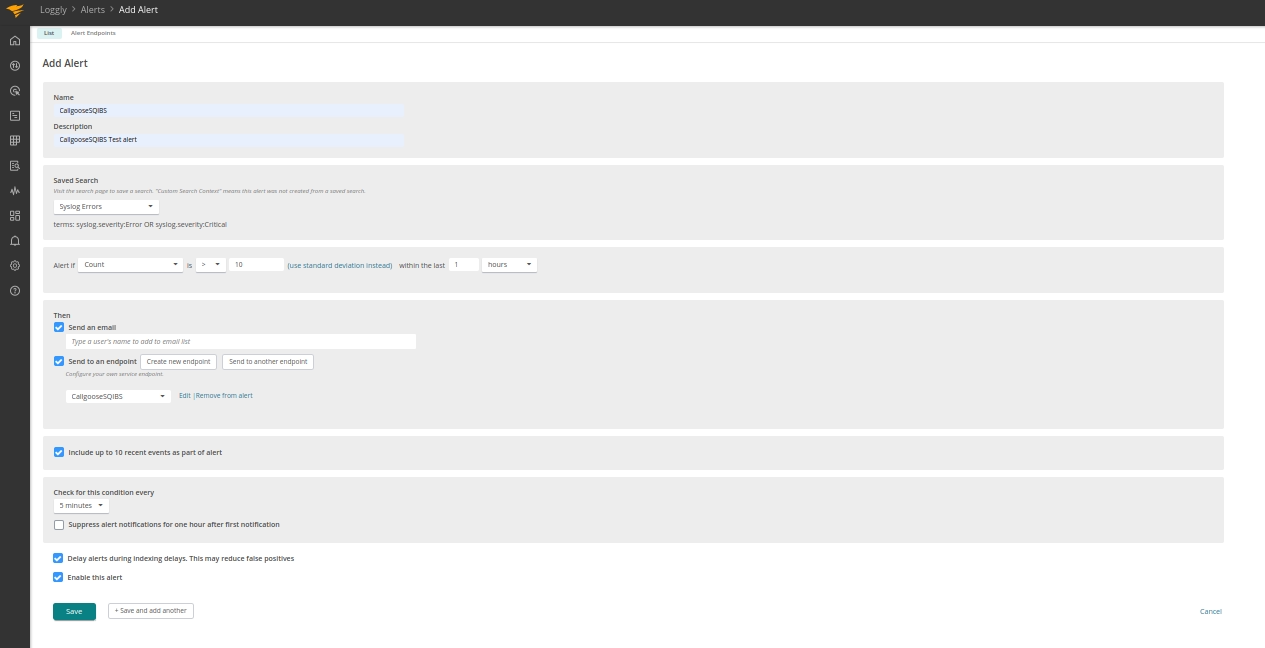
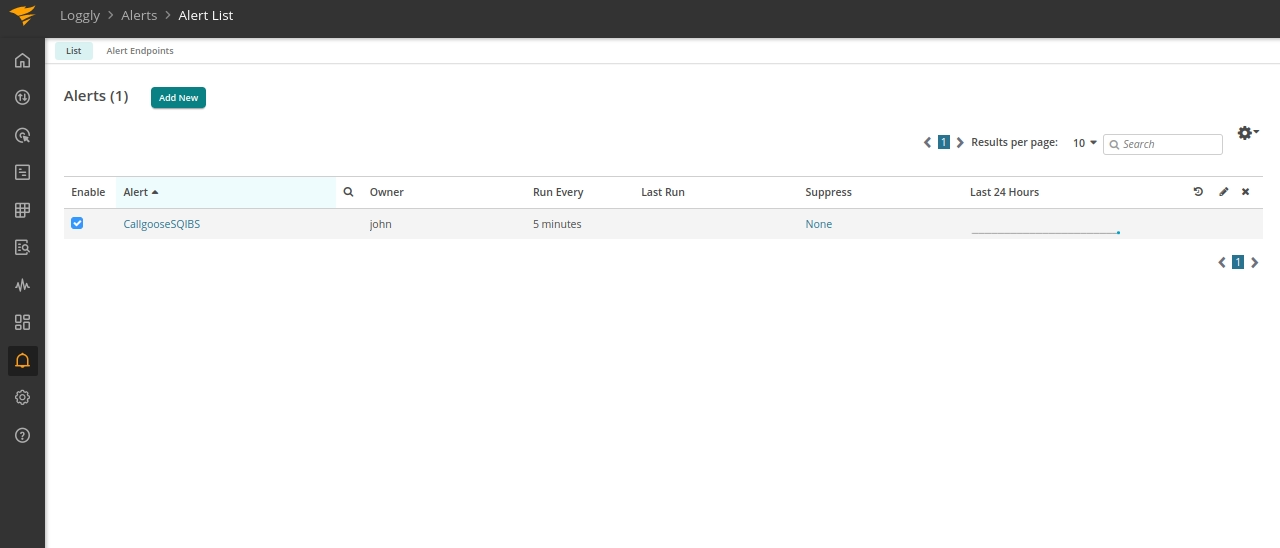
Your Loggly integration is finished at this point. A related incident in CallgooseSQIBS will be generated each time an alert is triggered here.
-> Please make sure you have added API filter contains values in Callgoose SQIBS before you send test notifications.
-> To make this test work you can keep the API filter to receive all request. After getting the test incident, use the data from Loggly to customise the api filter to process upcoming requests correctly.
You can see that Callgoose SQIBS created the Incident as per the above Loggly payload values’
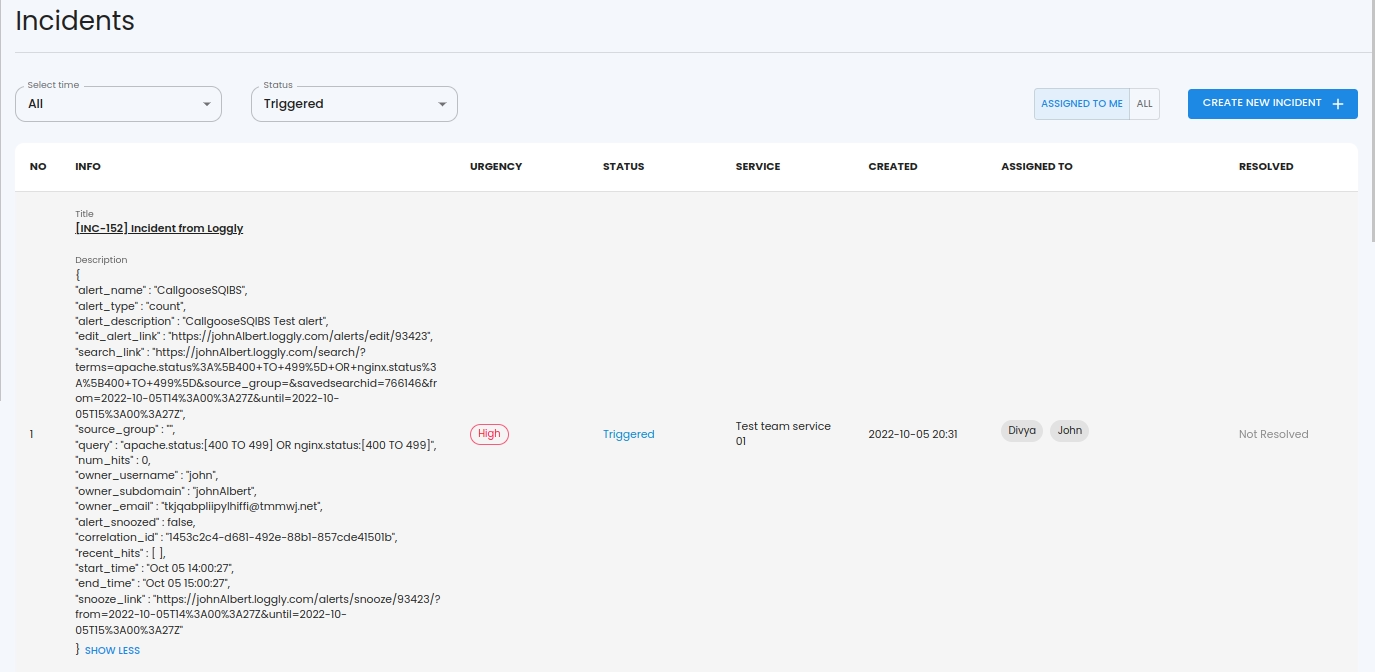
Now whenever an alert notification is triggered in Loggly, an incident will automatically be created in Callgoose SQIBS if the API Filter is success for the payload.

